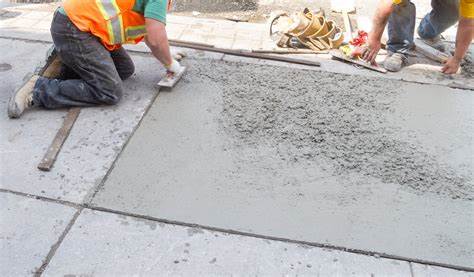How To Make Concrete More Workable In Lakeside Ca?

- The water-cement ratio is a critical factor in determining the workability of concrete. A higher ratio can make the concrete more workable but might compromise its strength. Use just enough water to make the mix workable, aiming for a ratio between 0.4 and 0.6.
- Chemical admixtures can significantly improve the workability of concrete. Plasticizers and superplasticizers reduce the water demand, allowing for an easier-to-work mixture while maintaining strength.
- The size and shape of aggregates play a pivotal role in concrete workability. Round, well-graded aggregate reduces the amount of water needed and enhances workability. Conversely, angular, poorly graded aggregate tends to require more water and reduces workability.
- Adequate mixing time is crucial for obtaining a homogenous concrete mix, resulting in improved workability. Under-mixing can lead to clumps and uneven distribution of components, whereas over-mixing can lead to segregation of aggregates and cement paste.
- Concrete sets faster in high temperatures and slower in cold. Control the temperature as much as possible to slow down the hydration process, giving you more time to work with the mixture.
- Materials like fly ash, silica fume, or slag cement can improve the workability of concrete. These materials can also increase the long-term strength and durability of the concrete.
- Vibration helps to consolidate the concrete, reducing the amount of entrapped air and increasing workability. However, excessive vibration can cause segregation; thus, it should be used judiciously.
FAQs
Can I Improve The Workability Of Concrete By Just Adding More Water?
While adding more water can increase workability, it can also weaken the concrete mix. Too much water can lead to a high water-cement ratio, reducing the strength and durability of the final product.
How Does Temperature Affect The Workability Of Concrete?
Concrete sets faster in warmer temperatures, reducing workability time. Conversely, in colder conditions, the setting process slows, providing more time for workability. Therefore, it’s crucial to take temperature into account when working with concrete.
Can Over-Vibration Affect The Workability And Strength Of Concrete?
Yes, over-vibration can lead to segregation of the concrete mix, with heavier aggregates settling at the bottom. This reduces workability and can negatively impact the strength and uniformity of the final product.
Conclusion
Improving the workability of concrete is a fine balance between various factors. By adjusting the water-cement ratio, using suitable admixtures, choosing the right aggregate size and shape, maintaining appropriate mixing time, controlling the temperature, using supplementary cementing materials, and applying the right amount of vibration, you can enhance the workability of your concrete mix. For more information, contact Concrete Contractor Lakeside Ca at (619) 678-0052.